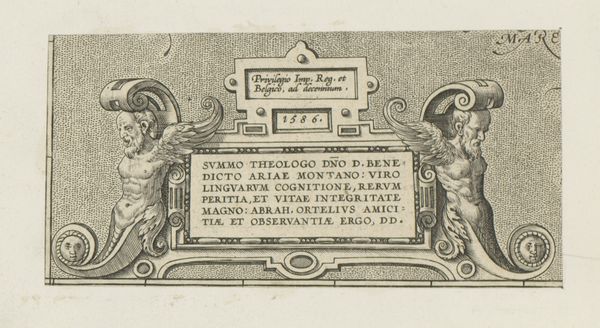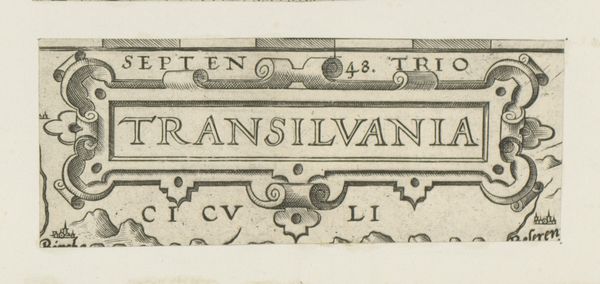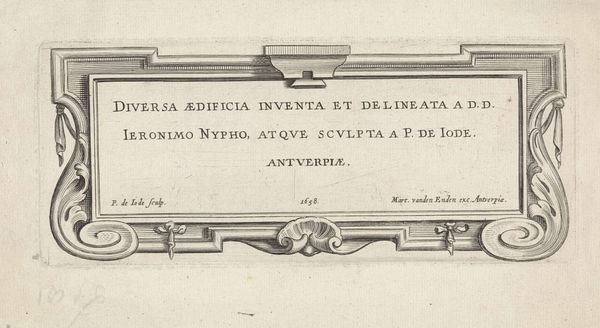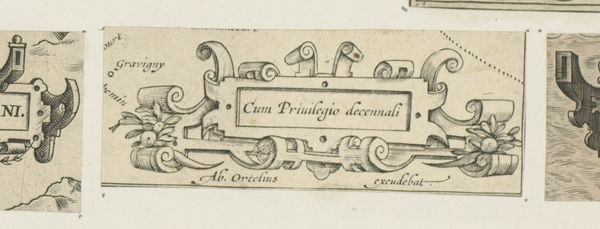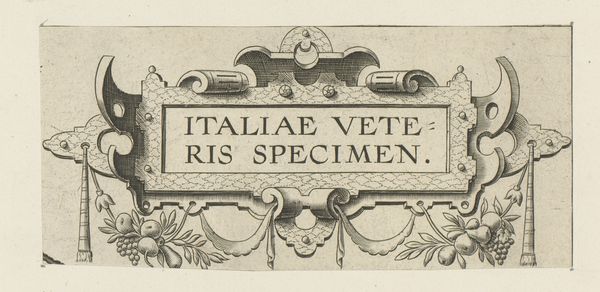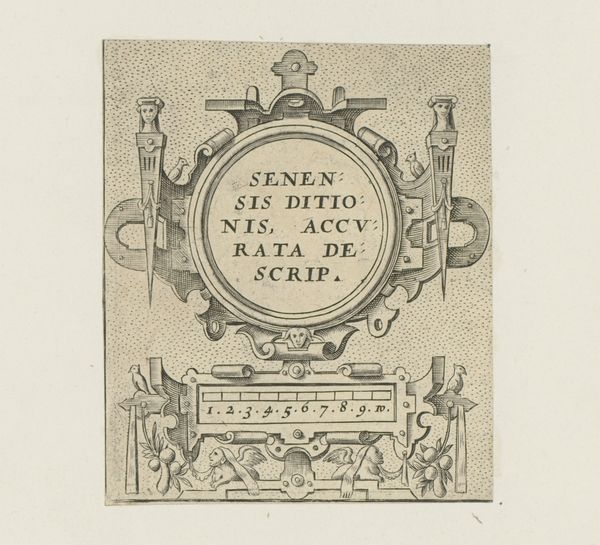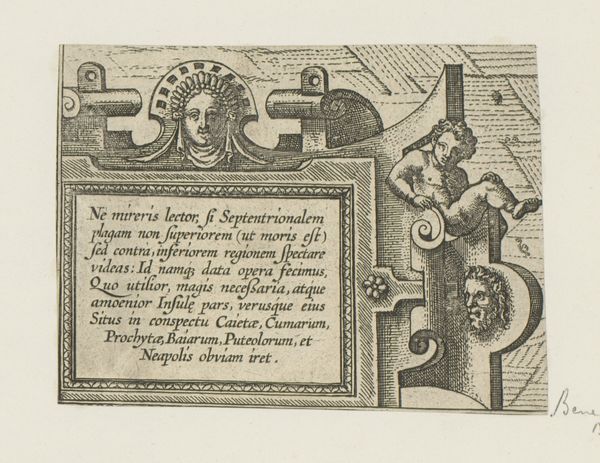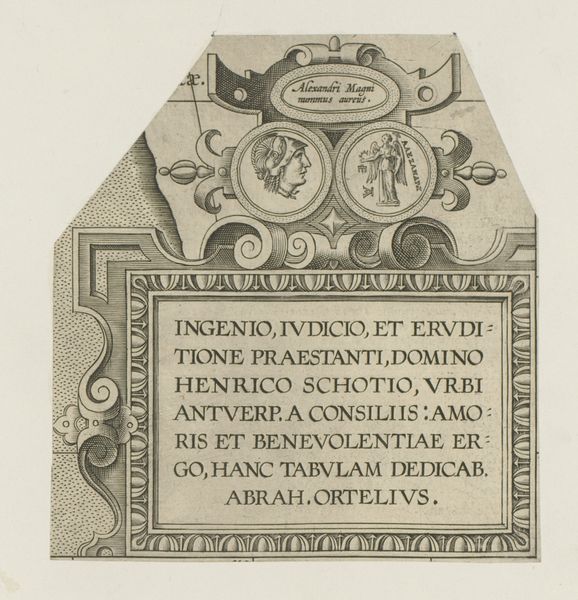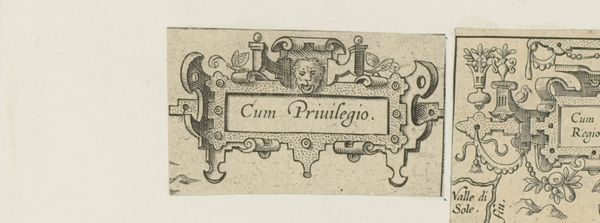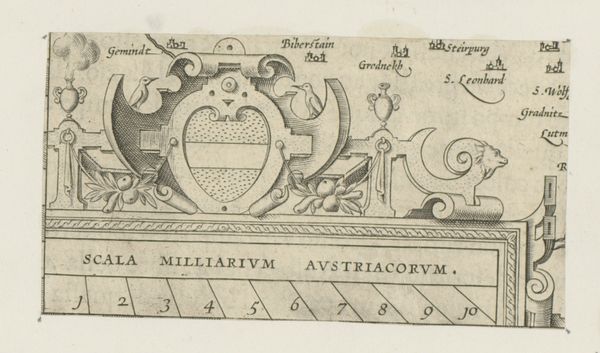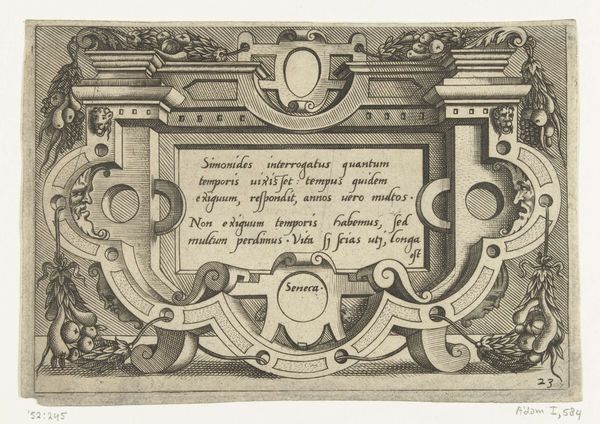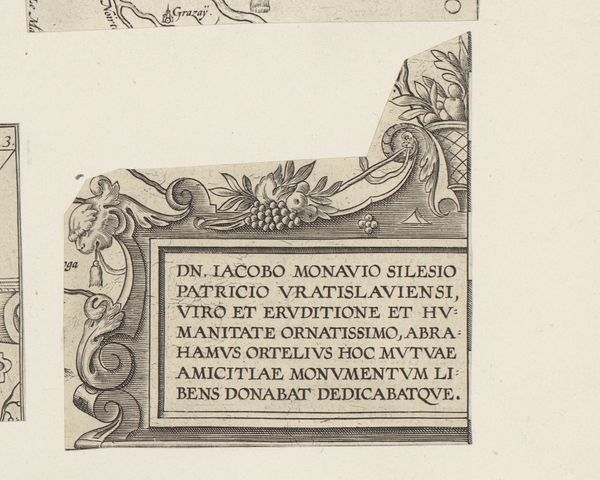
graphic-art, print, engraving
#
graphic-art
# print
#
old engraving style
#
landscape
#
geometric
#
engraving
Dimensions: height 61 mm, width 12 mm
Copyright: Rijks Museum: Open Domain
Editor: Here we have a 1595 engraving, “Rechthoekige cartouche met schaalstok,” attributed to an anonymous artist. The lines are so precise! It feels like looking at a blueprint almost. How do you interpret this work, considering its historical context? Curator: This piece, while seemingly a straightforward cartographic element, speaks volumes about the power dynamics of its time. Notice the inscription – "Patavini Territorii Chorographia" – essentially a map of Padua’s territory. But who gets to define and represent that territory? Maps were, and are, never neutral. They were instruments of power, used to claim, control, and visualize ownership. Think about it: who was commissioning these maps, and for what purpose? Editor: So, the act of mapping itself becomes a political statement? Curator: Precisely. This engraving, produced during a period of intense territorial disputes, highlights the anxieties and aspirations of the Venetian Republic. Who controlled the waterways? What resources were available? These were vital questions reflected in the very act of creating such a document. The “Milliaria” scale underscores the desire for precise measurement, an impulse toward control and management of space, but also reflects, potentially, attempts to justify territorial claims based on supposed objective precision. Editor: That makes me think about contemporary discussions around whose stories are being told and how… It seems relevant to what we still see today, right? Curator: Exactly. This isn't just about an old map; it's about the politics of representation, about understanding whose perspective shapes our understanding of the world, and it’s always a useful exercise to consider, and deconstruct, these perspectives in relationship to social and power structures. What do we see when we start questioning the so-called neutrality of cartography? Editor: I hadn't considered the inherent power structures within something seemingly objective like a map scale! That's really given me a new perspective. Curator: That's the aim: to read these objects not as static representations, but as active participants in shaping history.
Comments
No comments
Be the first to comment and join the conversation on the ultimate creative platform.
